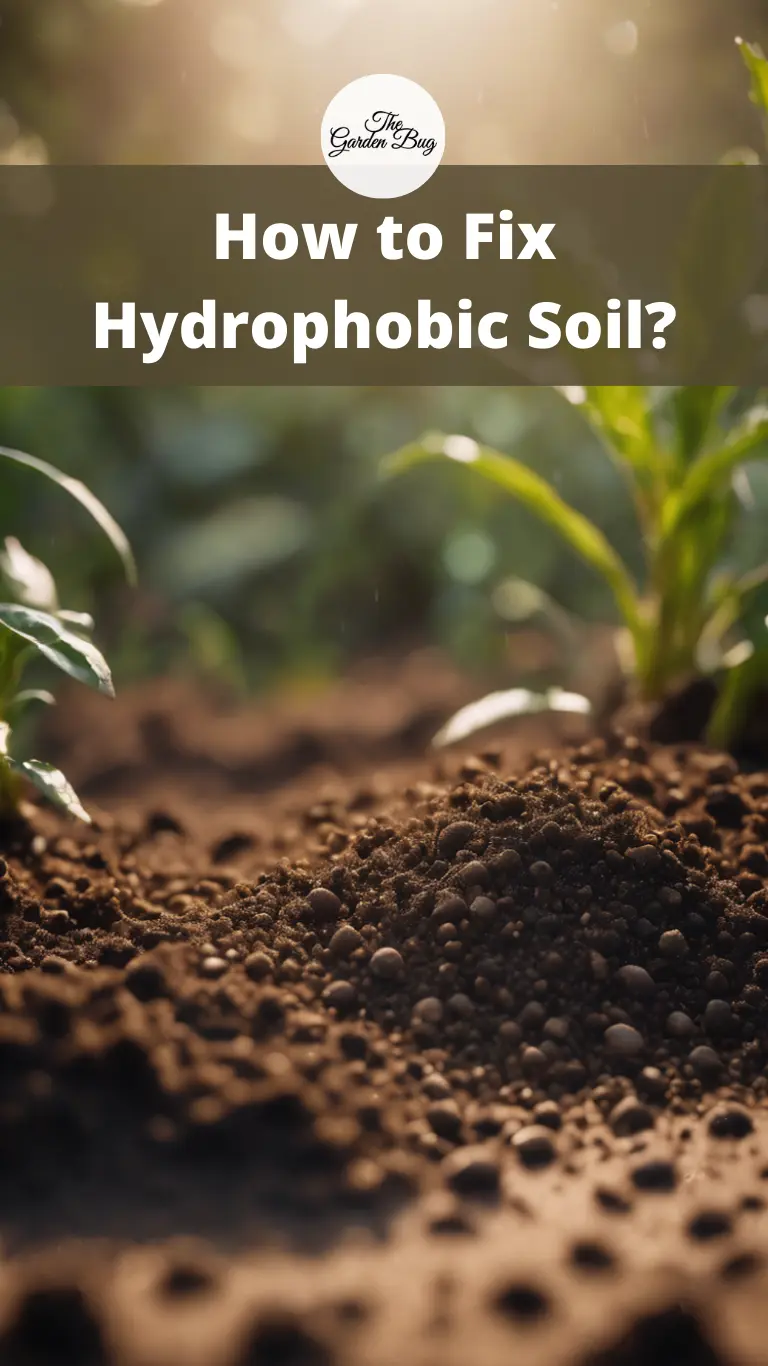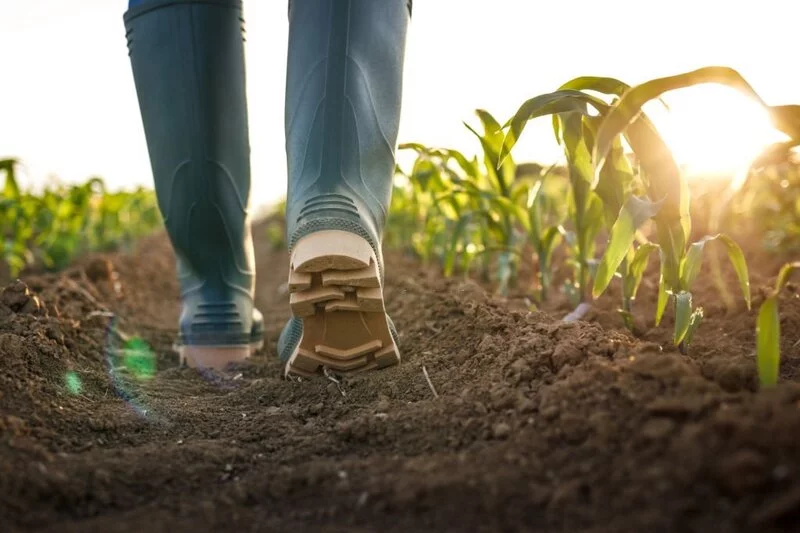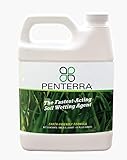Did you ever water your garden and watch in confusion as the water just rolled off the soil instead of soaking in? If yes, then you’ve likely encountered a problem called soil hydrophobia. This common gardening challenge can seem perplexing, but fear not! With a bit of know-how, you can fix your soil and get back to growing lush, healthy plants in no time.
- Liquid Soil Loosener: Can be used Alone or with Mechanical or Core Aeration, Aerating and Aerate Tools. Liquid Soil Loosener Conditions Compact Soil. Helps the Downward Movement of Water Allowing Vertical Drainage and Increased Water Infiltration.
- Concentrated Soil Conditioner: Soften Your Soil with this Advanced Lawn Solution, Easy To Use Treatment. Liquid Soil Loosener is Concentrated Liquid Solution. 32 ounce Bottle Covers up to 32,000 square feet.
- Helps Standing Water, Promotes Drainage: Improves Water and Liquid Infiltration. Use Alongside Any Turf Grass Fertilizer Nutrient Program.
- Produced In The United States: Liquid Soil Loosener is Made and Manufactured in the United States of America, by a Family Owned Business with Over 25 years of Former Experience in the Turf Grass and Agriculture Industry.
- Can Be Used On All Grass types: Including Bermuda, St. Augustine, Zoysia, Buffalo, Centipede, Florida Palmetto, Bahia, Fescue, Ryegrass & Kentucky Bluegrass.
Understanding Hydrophobic Soil
Hydrophobic soil is just a fancy term for soil that repels water. If you’ve ever tried to mix oil and water, you’ve seen a similar principle in action. Instead of soaking into the soil like it should, water beads up on the surface or runs off without penetrating the soil.
This happens when organic matter in the soil breaks down, leaving behind a waxy residue. This residue covers soil particles and makes it hard for water to get in. While it may sound daunting, understanding this is the first step towards addressing the issue and reclaiming your garden.
Causes of Hydrophobic Soil
A variety of factors can lead to hydrophobic soil. One common cause is the buildup of organic material, like leaves or bark mulch, which can decompose into a waxy substance that coats soil particles. Drought is another major contributor. When soil dries out for extended periods, it can become hydrophobic, which can create a vicious cycle: the soil repels water, becomes drier, and then repels even more water.
Recognizing Hydrophobic Soil
How can you tell if you have hydrophobic soil? There are a few key signs to look out for. The most obvious one is water not soaking into the soil. Instead, it might pool on the surface, or you might see droplets sitting atop the soil, refusing to be absorbed.
Another telltale sign is plants wilting despite regular watering. If water can’t penetrate the soil, it can’t reach the roots, and your plants can suffer as a result. Dry patches of soil, even after rainfall or watering, can also indicate hydrophobic conditions. Recognizing these signs early can help you address the problem and keep your garden thriving.
Steps to Fix Hydrophobic Soil
- Wetting Agents: These are substances that help water penetrate the soil. You can find commercial wetting agents at gardening stores. Simply mix it with water as directed on the package and apply it to your soil. This can be a quick fix, but remember, it might not address the root of the problem.
- Organic Matter: Adding organic material like compost or well-rotted manure can improve the structure of the soil, making it easier for water to penetrate. It also adds nutrients, which can help your plants thrive.
- Aerating the Soil: If the soil is compacted, loosening it up with a garden fork or aerator can help water soak in more effectively. This also allows roots to expand and take in more water and nutrients.
- IMPROVE WATER PENETRATION on lawns, fairways, athletic fields and gardens with Penterra Soil Penetrant and Wetting Agent. Our high-grade proprietary formula promotes water movement deep into compacted soil to improve nutrient uptake and aerification of soils.
- THE FASTEST ACTING soil penetrant on the market, Penterra reduces surface tension so its beneficial secondary effects can resolve localized dry spots, promote healthier turf and deter soil erosion.
- REGULATE MOISTURE and use less water by keeping soil from locking-up. Penterra helps to reduce crusting, loosens hard clay soil, and allows water and oxygen to better reach plants. This improves soil structure and reduces plant stress without overwatering.
- FLUSH EXCESS SALT and reduce water repellency to increase availability of nutrients. Penterra Soil Penetrant increases the time in which plant roots can absorb water. This improves root growth and reduces soil erosion, both critical to soil ecologies and plant health.
- PROFESSIONAL-GRADE FORMULA reduces incidents of standing water damage to golf courses, crops, athletic fields and general landscaping. Penterra Soil Penetrant is not plant food. It is important to immediately flush Penterra from foliage or leaf surfaces with water.
Prevention and Maintenance
The best way to manage hydrophobic soil is to prevent it from happening in the first place. Regularly adding organic matter can keep your soil healthy and prevent waxy buildup. Additionally, try to water deeply but less frequently, as this encourages roots to grow deeper and makes them more resilient to dry periods. Monitoring your soil moisture and adjusting watering practices during drought conditions can also prevent soil from becoming hydrophobic.
Frequently Asked Questions about Hydrophobic Soil
- Why is my garden soil repelling water? Garden soil can repel water due to a buildup of waxy substances from decomposed organic matter or prolonged dry conditions. Compacted soil can also lead to water repellence.
- Can hydrophobic soil harm my plants? Yes, hydrophobic soil can cause plant stress as it prevents water from reaching the roots. This can lead to wilting, stunted growth, and in extreme cases, plant death.
- How often should I apply a wetting agent to hydrophobic soil? The frequency depends on the severity of the soil’s condition, the specific product you’re using, and the ongoing weather conditions. Always follow the manufacturer’s instructions.
Conclusion
Hydrophobic soil can pose a challenge for even the most experienced gardeners. However, understanding the causes and signs of this condition can help you act swiftly to rectify the situation. By using wetting agents, adding organic matter, and aerating your soil, you can help the water penetrate the soil effectively. Remember, prevention is better than cure, so consistent maintenance and good watering practices can keep your soil healthy and your plants happy. With these tips, you can conquer hydrophobic soil and maintain a lush, vibrant garden.






